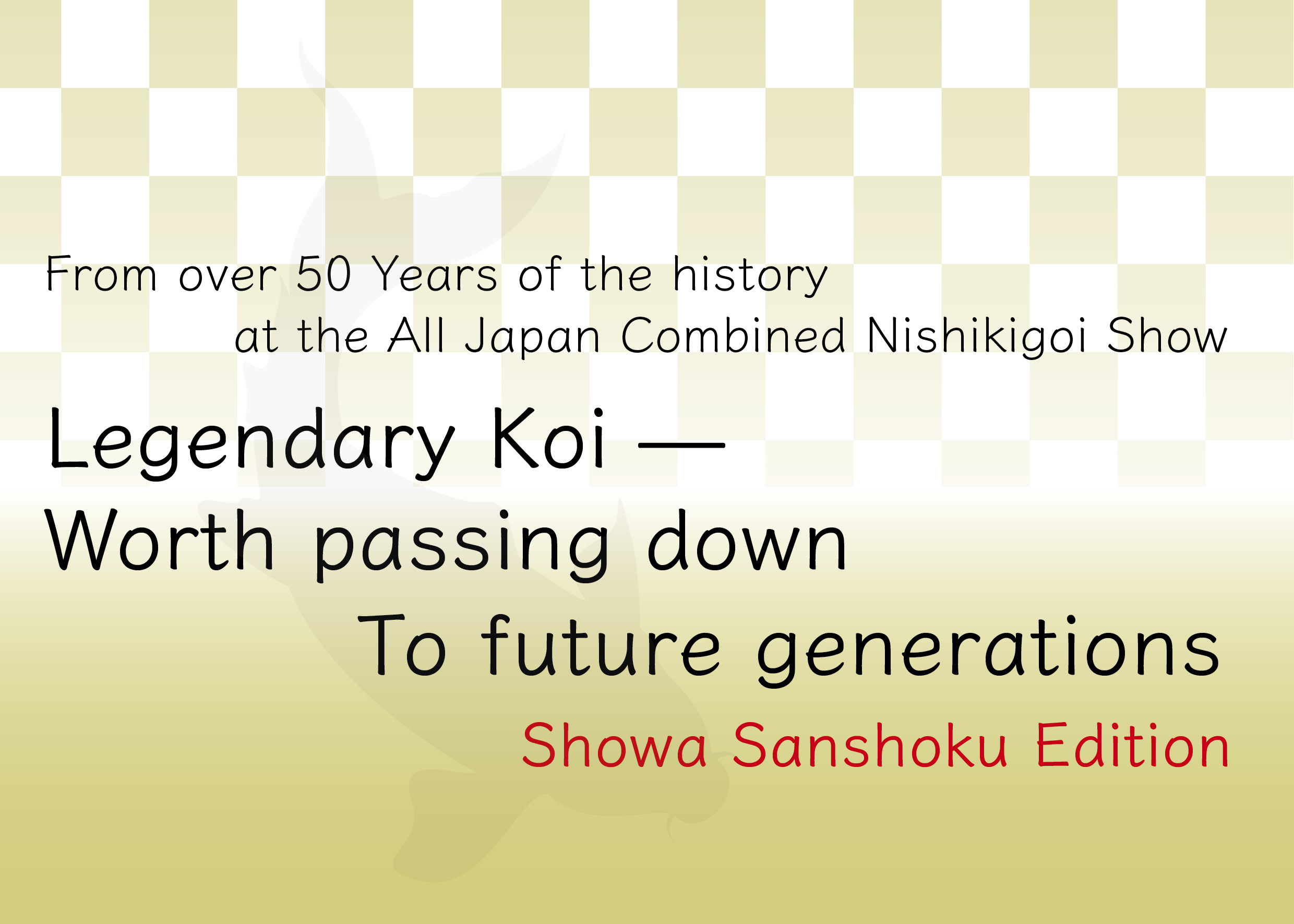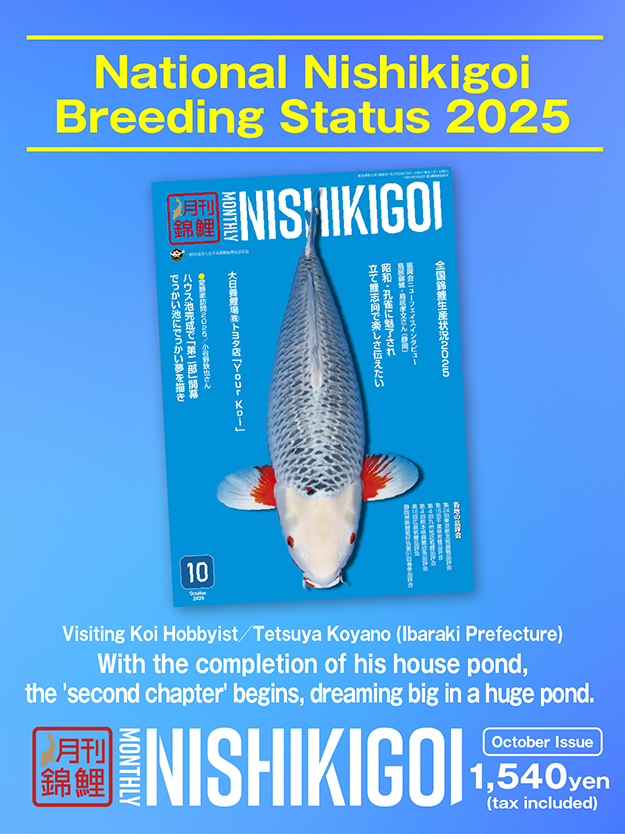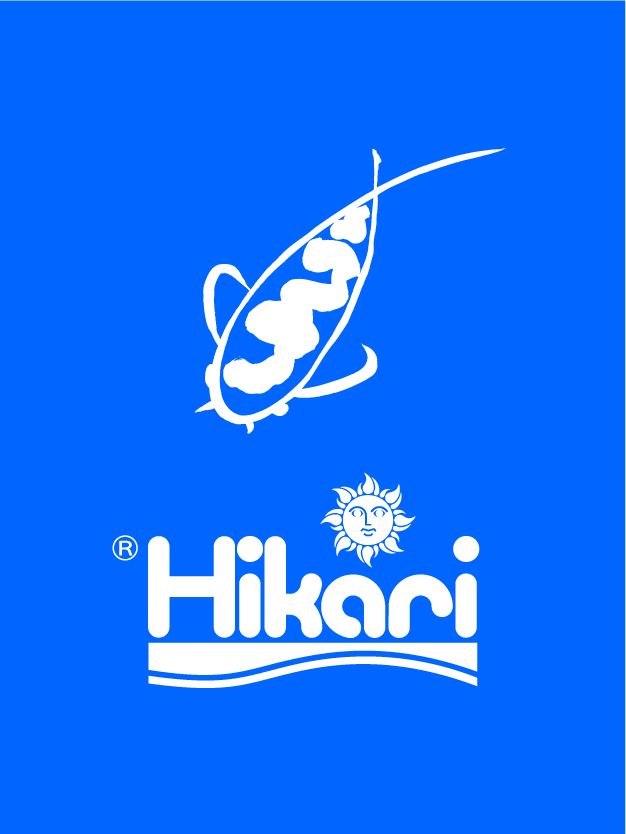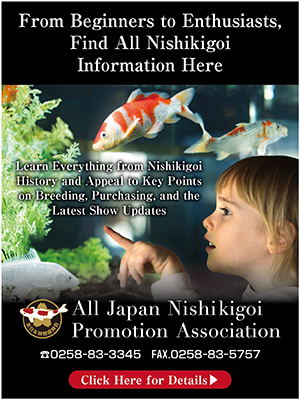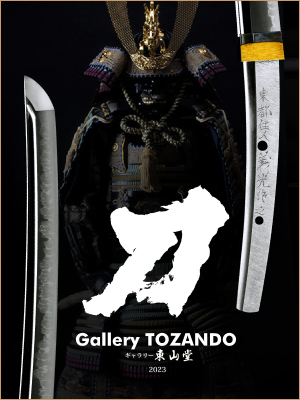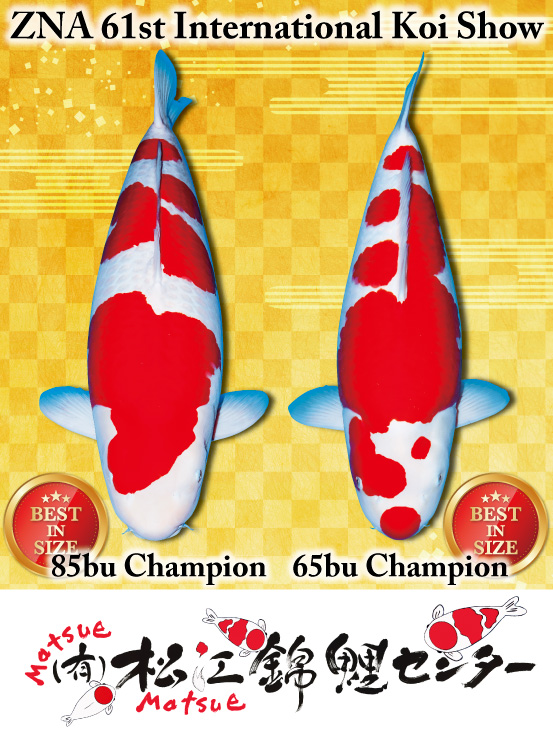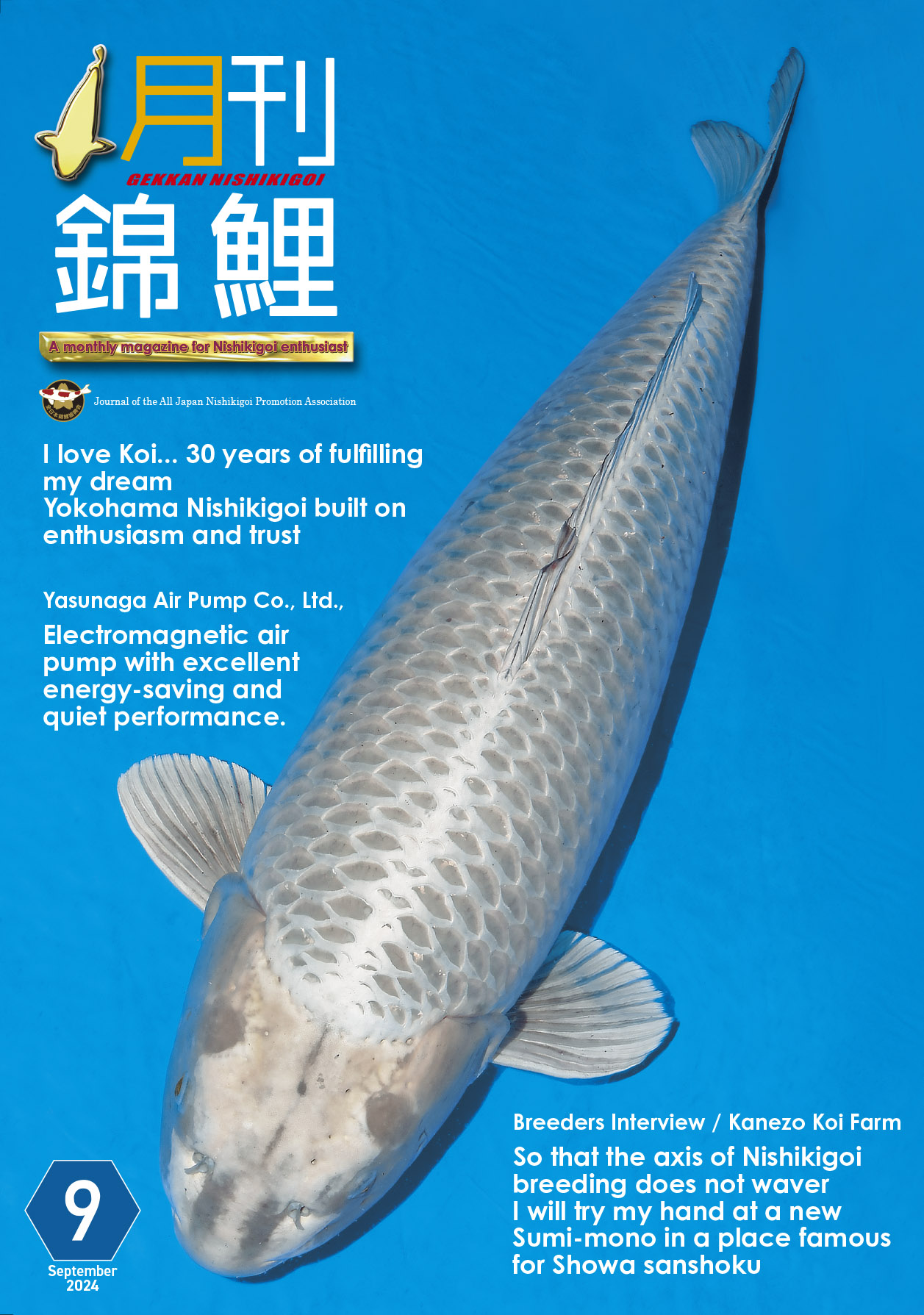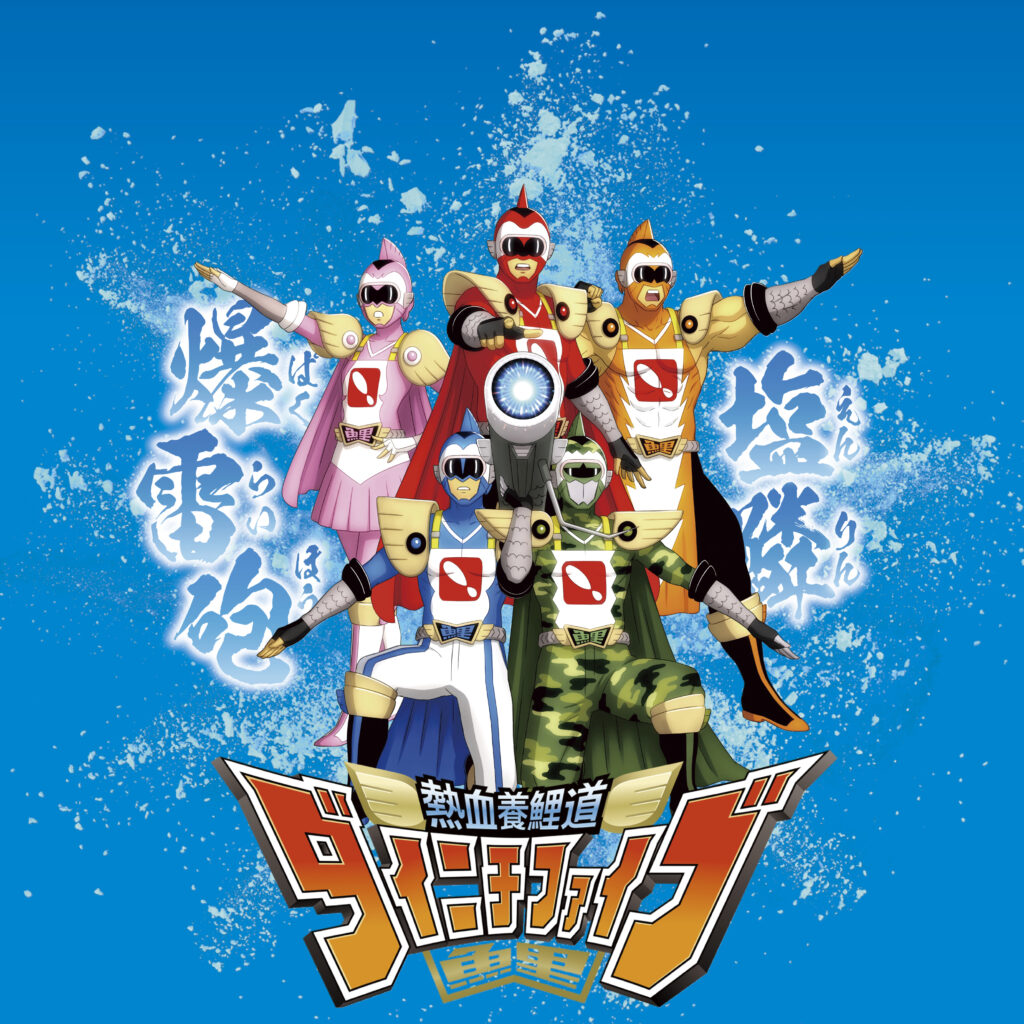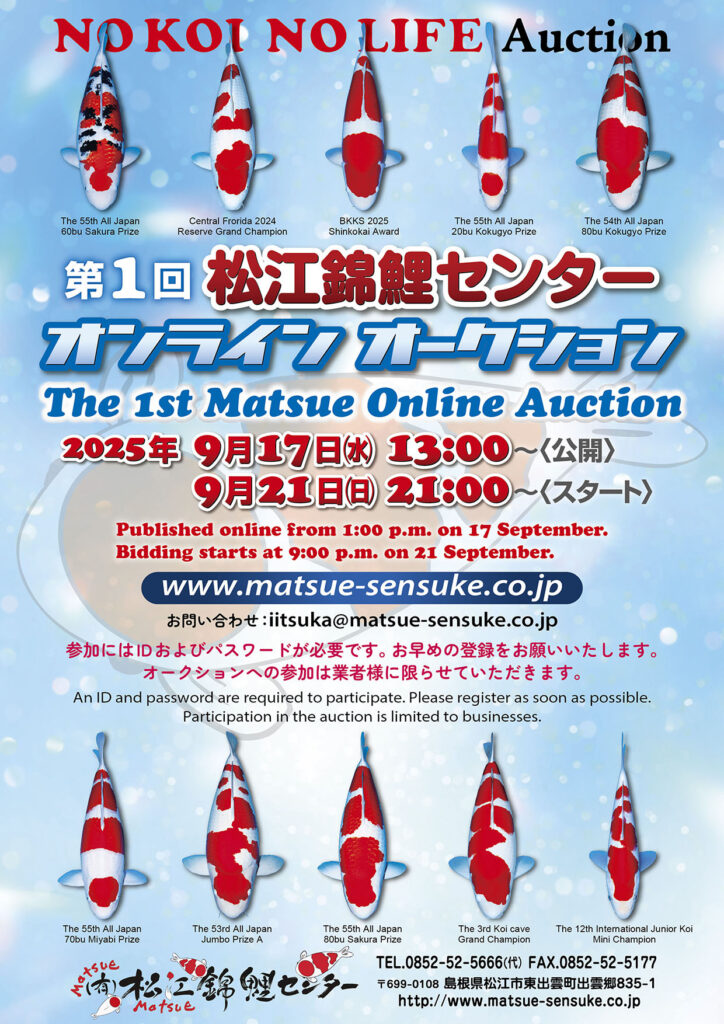From over 50 Years of the history at the All Japan Combined Nishikigoi Show
Legendary Koi worth passing down to future generations : Showa Sanshoku Edition
By Noriaki Kojima (Chanobi)
The Combined Nishikigoi Show, organised by the All Japan Nishikigoi Promotion Association, has been held for over 50 years. Throughout its long history, countless beautiful Nishikigoi have left lasting impressions on many and touched the hearts of enthusiasts—a fact that hardly needs stating.
Among those countless beautiful Nishikigoi, some stand out with such exceptional beauty that, even today, they remain vividly etched in the minds of those who saw them. These are the actual “exceptional koi” — legendary koi worthy of the name. In this series, we will feature these iconic representatives of their respective eras, shining on the grand stage of the koi show, introduced by variety.
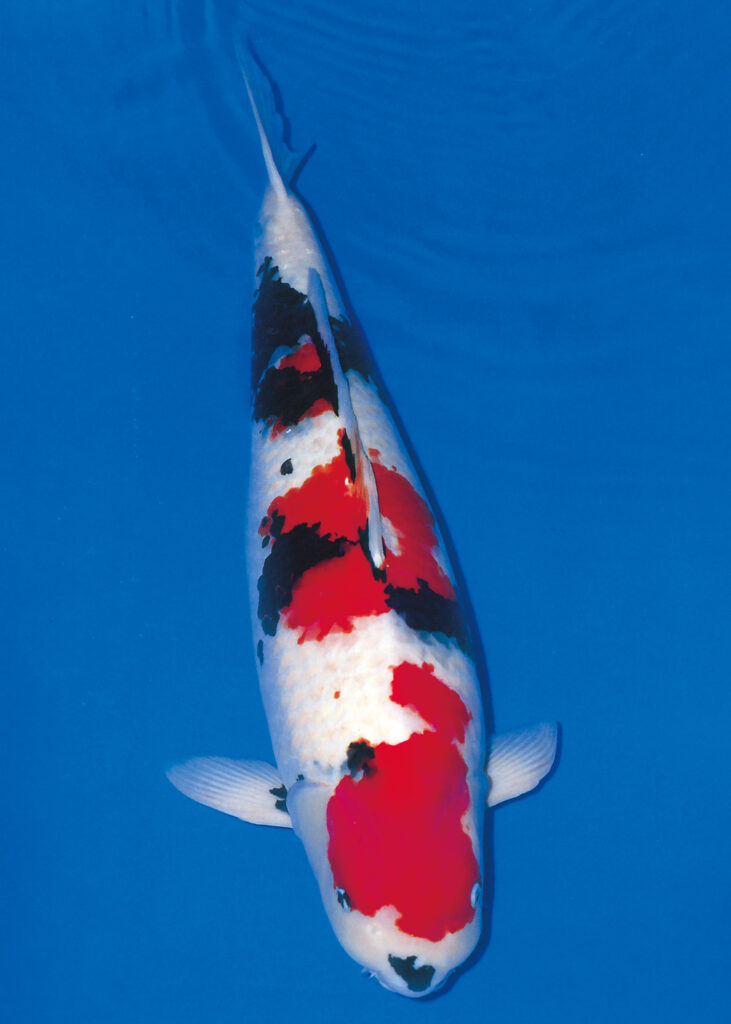
A stunning, well-built koi with striking shiroji, Sato Showa is celebrated as one of the finest examples of Kindai Showa today. When it first appeared on the scene, it was the favorite koi of Japan’s renowned hobbyist Susumu Fujita. At three years old, it caught the eye of the legendary master Minoru Mano (former head of Dainichi Koi Farm) at the All Japan Combined Nishikigoi Show, and Dainichi Koi Farm owned the koi. After a year of careful refinement there, it returned to the care of Mr. Sato as his beloved koi.
During the height of the bubble economy, this koi became admired by many enthusiasts. One collector was so eager to own it that he visited Mr. Sato carrying a duralumin case filled with 100 million yen, hoping to buy it—but Mr. Sato refused, saying he would never sell this koi for money. This story became a legendary anecdote of the bubble era, marking Sato Showa as a once-in-a-lifetime masterpiece.
It won Overall Champion at the ZNA 26th International Koi Show and Kokugyo Award in the 15bu (over 80 cm) at the 23rd All Japan Nishikigoi Show
■Breeder: Konishi Koi Farm. Joji Konishi (Hiroshima City, Hiroshima Prefecture)
■Exhibitor: Shozaburo Sato (Oita Prefecture)
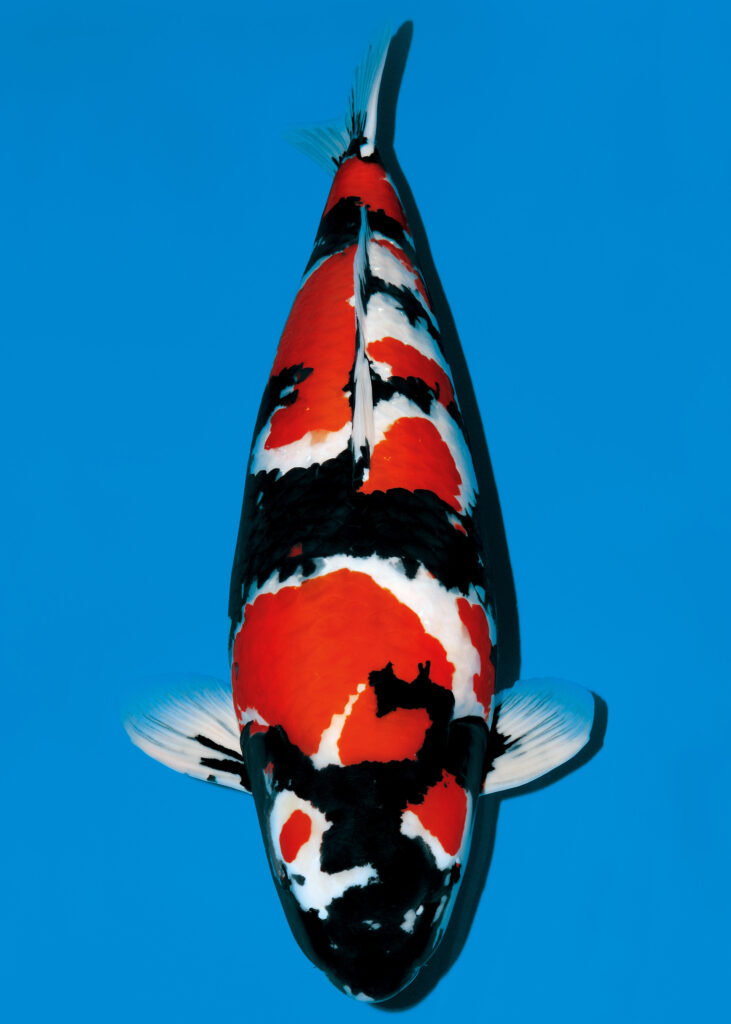
This koi, bred from a prestigious parent (Kokugyo) from Dainichi Koi Farm, was recognised for its strength from an early age. It first appeared at the 41st All Japan Combined Nishikigoi Show at the age of four, measuring just under 75 cm, and won first place in the Showa Sanshoku 75bu category. At the following 42nd show, it was five years old and 79 cm, already considered a contender for the overall champion title. The following year, at six years old and 84 cm, it achieved a remarkable victory as the Overall Champion of the 43rd All Japan Combined Nishikigoi Show.
From the time its owner acquired it at two years old and 53 cm, this koi grew year by year, gaining beauty, lustre, body fullness, and strength. For many years, it brought great joy to its owner as a truly remarkable and captivating koi.
■Breeder: Dainichi Koi Farm, Futoshi Mano, Hiroshi Mano and Shigeru Mano (Ojiya City, Niigata Prefecture)
■Exhibitor: Jitsuro Takagi (Fukuoka Prefecture)

The eldest son of Omosako Koi Farm bred this Showa Sanshoku. It was the first offspring produced in the year he returned home after completing his training at Dainichi Koi Farm, by crossing a female Dainichi Showa—spawned for the first time that year—with a male Hirasawa Showa bred by Takashi Hirasawa, the head manager at Dainichi. When I saw this young koi being carefully raised in the newly built house to grow into a slightly larger-than-average tosai, it was already displaying its characteristic hi and sumi patterns. Compared to its siblings, it was larger and unmistakably a standout “the best koi” from tosai—a sight I have never forgotten. Even when I expressed a desire to purchase it, the breeder politely declined, saying that since it was the first offspring, he wanted to watch it grow for his own enjoyment. It shows that the koi had been one of his prized expectations from tosai.
This koi was sent to Narita Koi Farms in Aichi Prefecture at the age of four, becoming the favorite koi of an Aichi Prefecture-based hobbyist, Hidenobu Nonogaki. It later came into the possession of Mr. Takagi and won the Colossal Champion at the 41st All Japan Combined Nishikigoi Show. While many Showa Sanshoku koi undergo significant pattern changes as they grow, this koi’s markings remained stable from tosai, developing into a magnificent body—a remarkable achievement. There is no doubt that it is a rare and highly prized koi.
■Breeder: Omosako Koi Farm,Takayoshi Omosako (Kure City, Hiroshima Prefecture)
■Exhibitor: Jitsuro Takagi (Fukuoka Prefecture)
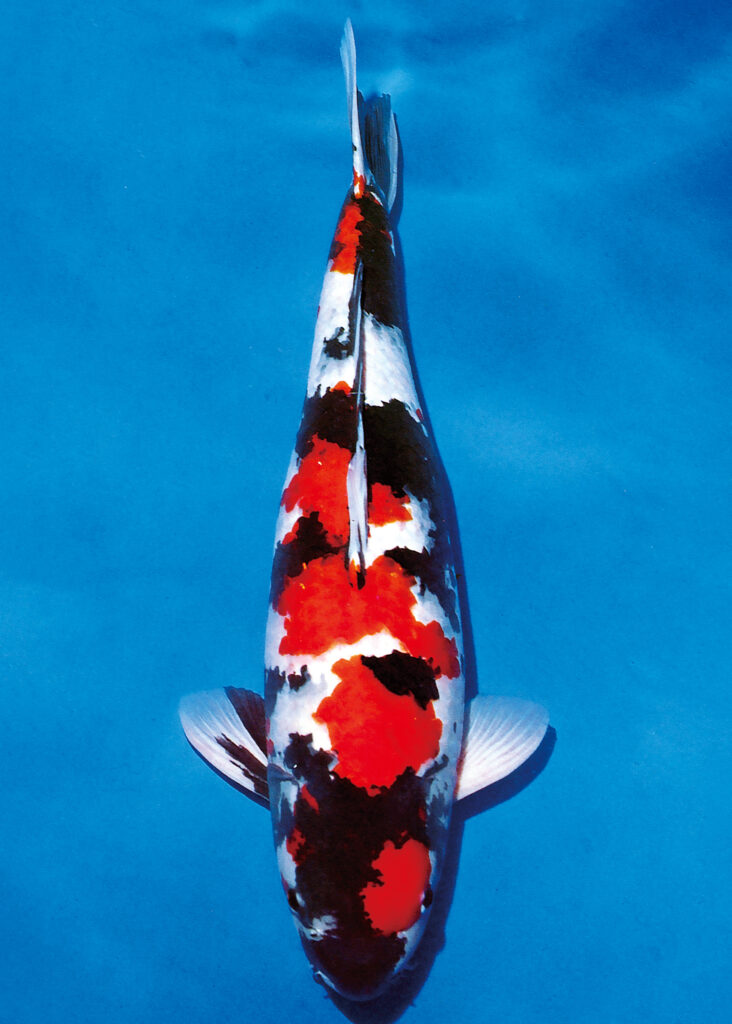
This distinguished koi, with its bright and powerful pattern contrast and magnificent body, is so remarkable that one might think the term “Kindai Showa” was coined for it. It is a koi that should be considered the progenitor of Kindai Showa.
On its white skin, high-quality sumi ink appeared with striking depth, complemented by bright hi patch. At the time, I was still a student and took the train all the way to Himeji in Hyogo Prefecture to see this koi and catch a glimpse of its legendary owner. The owner, who had built a successful business empire spanning butcher shops, restaurants, and more, even operated a massive amusement park called Azumi Paradise. He had converted a swimming pool—meant initially for recreation at the park—into a huge koi pond, where its koi swam gracefully. Anyone who saw the koi in that pool could not hide their amazement at the sheer audacity and grandeur of its owner.
■Breeder: Suda Fish Farm, Atsushi Suda (Ojiya City, Niigata Prefecture)
■Exhibitor: Shigeo Azumi (Hyogo Prefecture)

